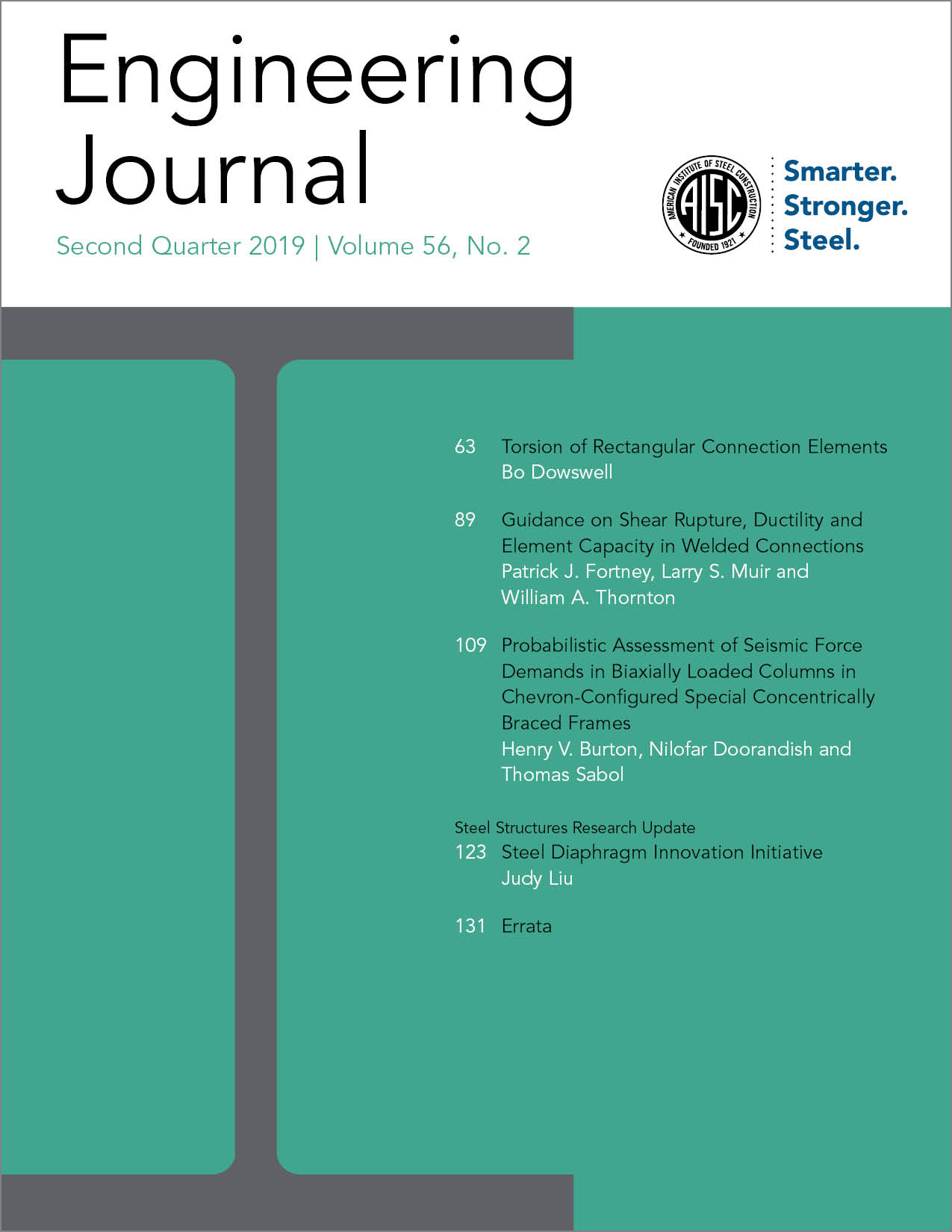Guidance on Shear Rupture, Ductility and Element Capacity in Welded Connections
DOI:
https://doi.org/10.62913/engj.v56i2.1146Keywords:
welded connections, shear rupture, ductility, element capacityAbstract
Several considerations need to be made while in the process of designing welds and welded connections. For the most part, the AISC Specification for Structural Steel Buildings, in combination with corresponding parts of the AISC Steel Construction Manual, provides fairly good guidance on what is required to design Specification-compliant welds. However, there seems to be some confusion and controversy in regard to a few of these considerations. Specifically: (1) when is the load path from the weld to the connecting element(s) unclear? (2) When should the ductility factor be applied to a weld? (3) When should a weld be sized to develop the strength of a connecting plate? This paper is written in an effort to provide guidance in regard to these three considerations. Background into the development of the equations used to make these checks along with some discussion on the intent of application is provided and supported with some anecdotal examples. It is the objective of the authors to shed some light on these issues and hopefully clear any confusion and/or controversy, as well as to encourage more consistency throughout the steel construction industry with regard to these three considerations.

